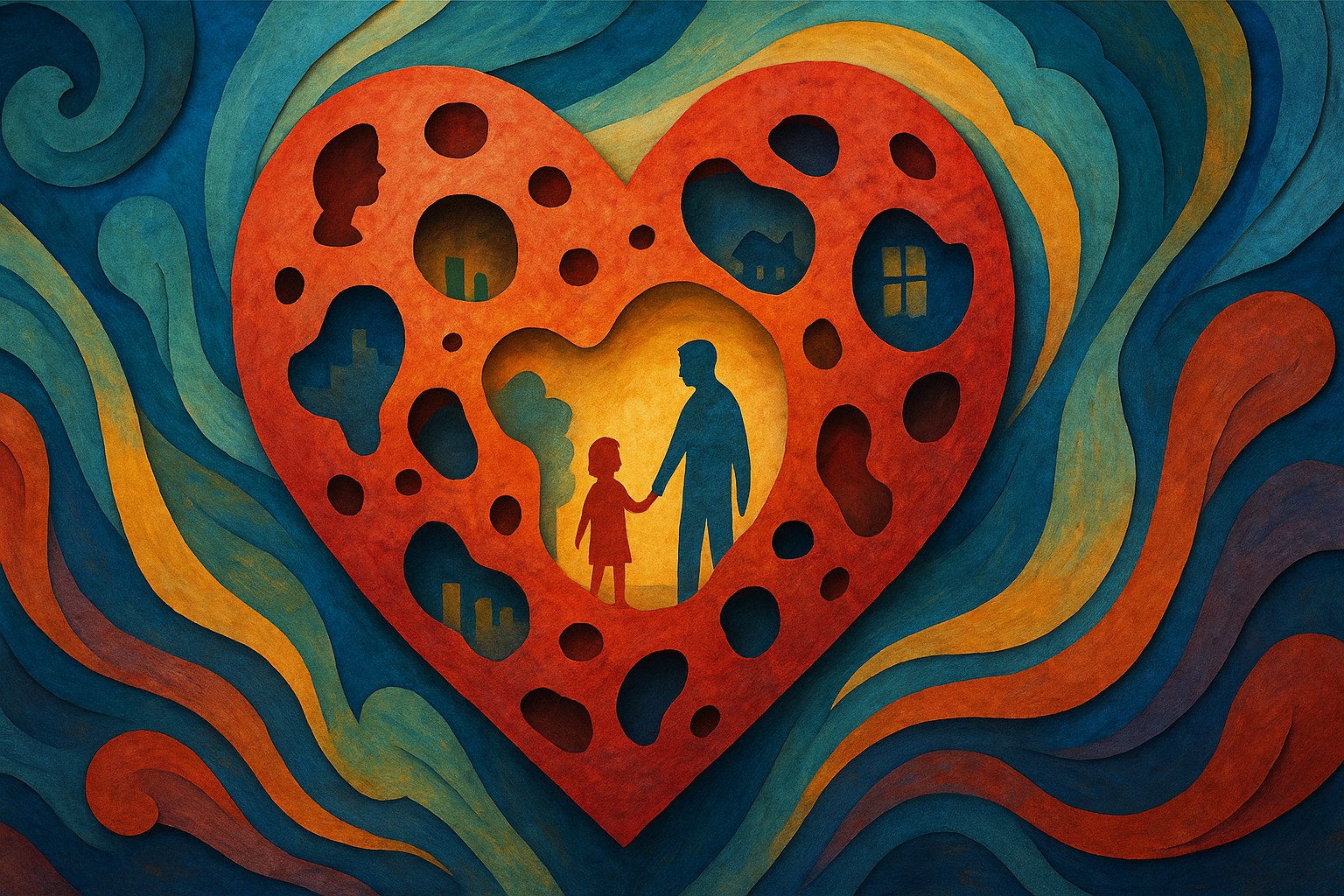READ IT TO ME: Click play to listen to this post.
“To accept one’s past—one’s history—is not the same thing as drowning in it; it is learning how to use it”. – James Baldwin
Everyone has a childhood storyline. We all need to be seen, soothed, and experience safety and security throughout childhood and into adulthood. However, no one gets through childhood unscathed. Some of us know big “T” traumas that would be described as sensationally awful. Others faced little “t” traumas that involved subtle abandonment, unpredictable environments, or lack of attunement, etc. If our childhood development were represented as a chunk of Swiss Cheese, the holes in the cheese would symbolically portray all of the Big “T” traumas and little “t” traumas of our lives.
As we grow and develop, unless we learn otherwise, most of us attempted to fill up the holes from the outside in. We do this through a cocktail of experience that underscores the importance of doing. We perform, seek thrills, relationships, and mood-altering substances.
Everyone accumulates a pool of pain that includes sadness, anger, resentment, tension, and anxiety. For many, the pool overflows into behaviors identified as “acting out”. It could be pouting, condescension toward others, bullying, and a host of other passive behaviors that are intimacy-disabling. For many, it takes the form of addictive behavior. They develop a pathological relationship to a mood-altering substance or process experience. They are unable to stop the compulsive behavior by themselves because the craving for soothing is so great that they are willing to do anything to feel the release and relief. And anything means just that! Addicts will sell their souls to satisfy their craving.
In recovery, addicts surrender to a program that helps them stop the runaway train going down the track, which is uncontrollable addictive behavior. They do 12-steps, talk about their history in depth, identify a higher power, learn to surrender and accept, identify their character defects, ask their higher power to remove them, work with making amends, and ultimately participate in giving back. Ultimately, the Steps transform their lives from addiction to sobriety.
Yet, the holes in the Swiss cheese from unmet childhood needs have never been addressed or fulfilled. Like Whack-a-Mole, childish, immature behavioral responses pop up in adult scenes and sabotage intimacy in adult relationships in every imaginable way.
People try everything to avoid facing the deep inner pain that exists. They try religion, positive mental attitude (PMA), material accumulation of wealth and power, all types of therapy modalities, psychedelics, plant-based approaches, and almost anything to feel better through utilizing outside efforts to fill up inside emptiness. Nothing wrong with experiencing any of the aforementioned, but for most who are looking to escape the pain, their attempts don’t work.
Many people in recovery are dominated by shame in their lives. Shame can be low side or high side. Low side shame is surrendering to the addiction. High side shame engages trying to do more to keep from being less. Their recovery is like being chased by a pack of wolves who relentlessly nip at their heels as they frantically run to avoid being caught. Over time, they wear down, but the pack relentlessly pursues. The only option is to stop and turn around and face the unrelenting pack of wolves (the shame). They must courageously double their fists and stick them in the mouths of the gnashing teeth of the vicious wolves (the shame)—to only discover that, like paper machete, there is nothing on the other side.
Facing the wolves of your life is called stalking shame. Every adult must do this for the little child within (the unresolved fearful, insecure, anxious, abandoned part) every time you face an overwhelming adult situation.
To do this requires that you drain the pool of pain that you have been avoiding. This involves going into the trenches of your past experience, embracing the feelings (anger, sadness, fear, overwhelm, intense discomfort, shame, etc) and sitting with the reality of unmet needs experienced during critical developmental times of childhood.
Sitting means grieving what should have been, might have been but never was and allowing the emotions that come to just be. It means that you attend to yourself with gentle loving kindness.
The focus is rather than trying to fill an unmet need, you make meaning about your past and recognize that those unmet needs will never be met by parents or others who are incapable of meeting yesterday’s needs.
Once you scrub the emotional wound with grief work, you function as your own parent for the rest of your life with the assignment to create a destiny of self-care. No one can be your mother/father as well as you can. With this reality, you give up the powerful storyline that has victimized and dominated you by marching toward your destiny created by the universal brilliance that is limitless and resides within the same spirit that was once dominated by addiction and childish behaviors. James Baldwin is right. The question is, will you drown in your past history, or will you accept and learn how to use it?





